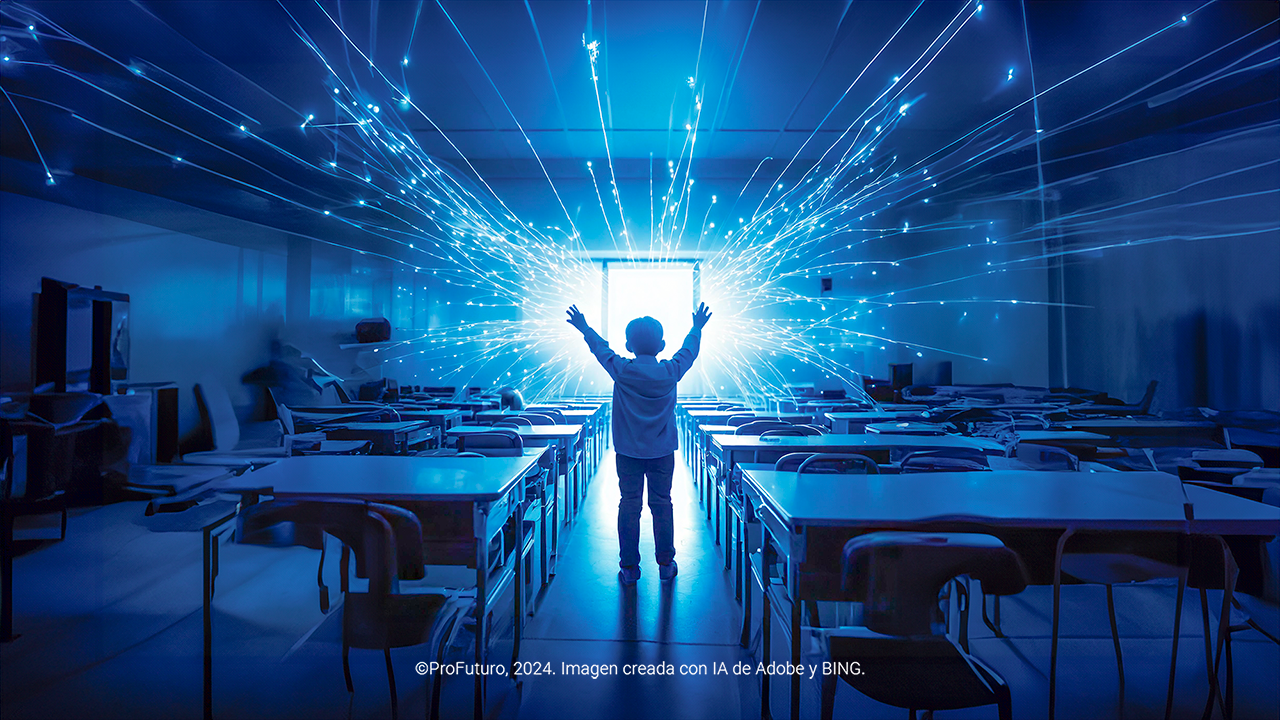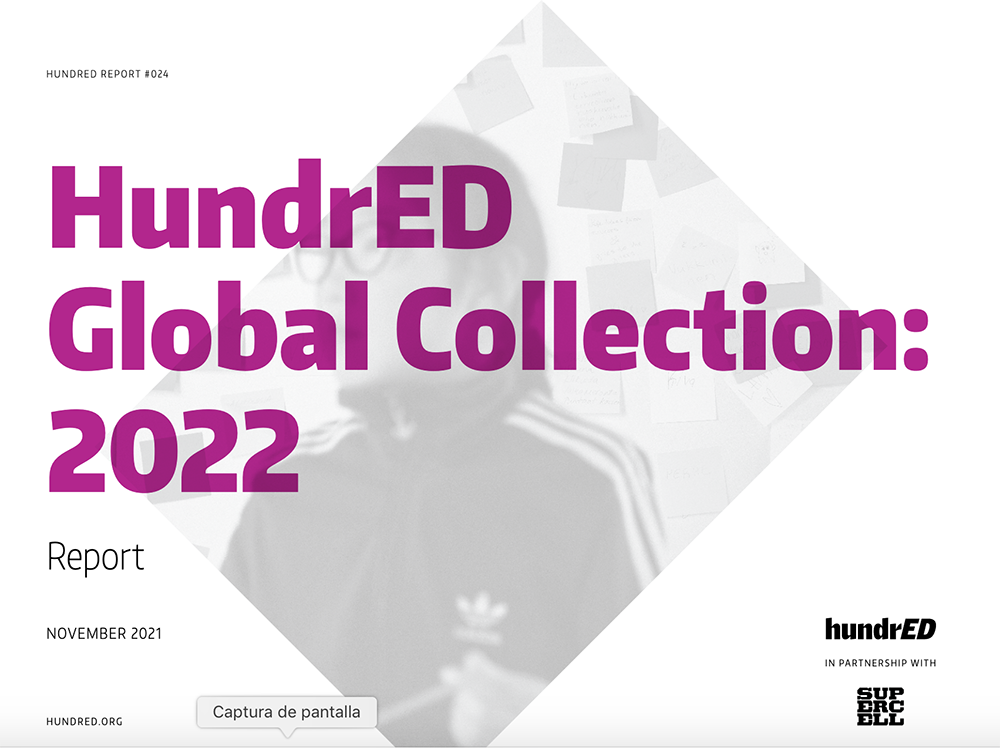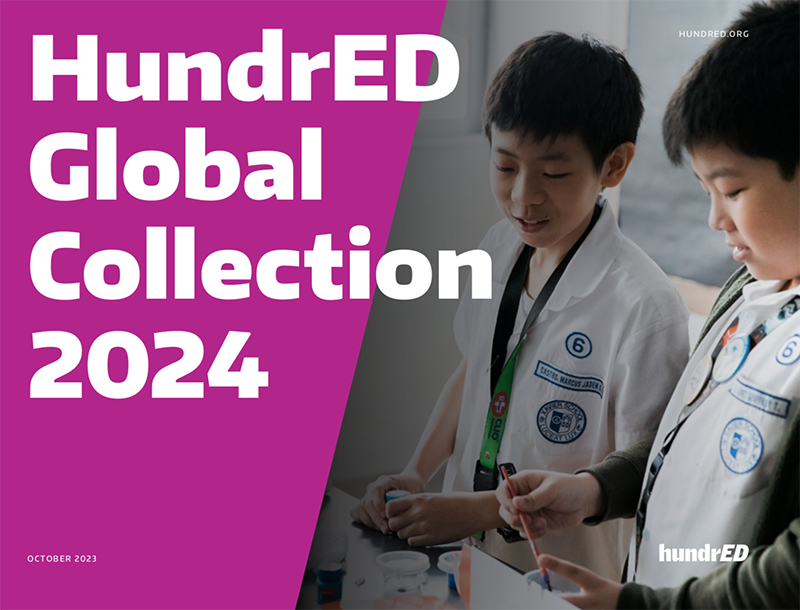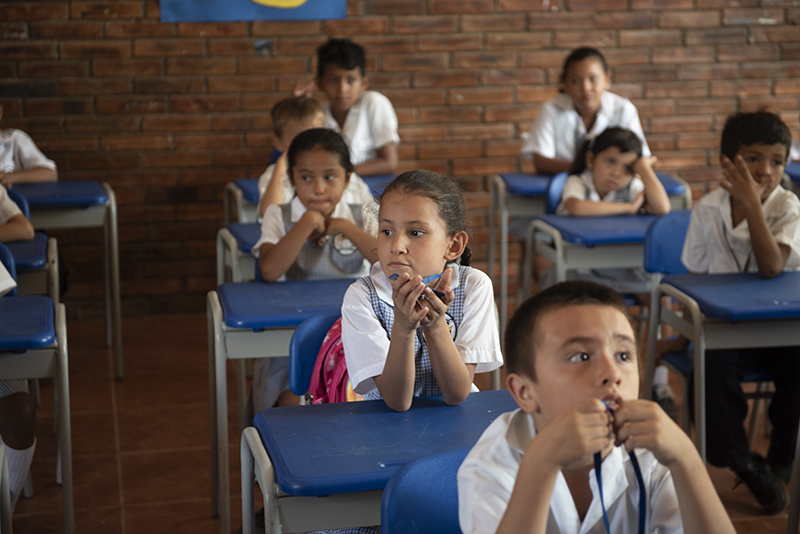We know that in future classrooms, learning will not be confined to desks and chalkboards. It will be an immersive, personalised, and deeply human experience. Education is undergoing an unprecedented transformation, driven by the technological revolution and the need to address global challenges such as climate change and inequality. In this context, educational innovation becomes the central cog in the machinery needed to build a new education system—one where all children can learn and thrive in an uncertain world.
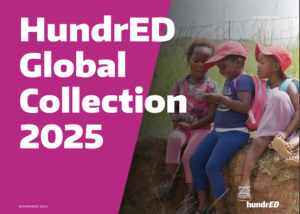
In light of this, HundrED’s annual Spotlight Report serves as a map for the future of education. The report not only selects the year’s top 100 educational innovations but also inspires systemic change by connecting pioneering ideas with communities, schools, and governments worldwide. The selected innovations tackle complex problems with creativity and purpose, proving that education can be a powerful tool for social progress.
The report’s importance lies in its multidimensional approach. It’s not just about integrating technology or improving grades; it’s about creating learning experiences that foster wellbeing, promote equity, and develop skills needed for the 21st century.
Aligned with the United Nations’ Sustainable Development Goals (SDGs), HundrED’s 2025 Report focuses on sustainability, student wellbeing, and 21st-century skills. Additionally, the integration of digital technologies such as artificial intelligence (AI) and the promotion of collaborative methods stand out as priorities for improving educational outcomes and preparing students for complex challenges in an interconnected world.
This article delves into the HundrED 2025 Report. We explore its methodology, examine the key trends shaping the future of education, and highlight 10 standout innovations that exemplify practical and scalable solutions to enhance learning, equity, and student wellbeing.
More Than 700 Innovations and a Junior Academy
HundrED’s Spotlight is the result of an exhaustive, global process aimed at identifying the best educational innovations on the planet. It begins with an open call that attracts over 700 proposals from around the world.
To select the final 100 innovations, HundrED involves its Academy, a group of over 230 experts who go beyond traditional approaches. This year, they’ve taken a bold step by including, for the first time, a Junior Academy—a group of young people aged 12 to 15 who bring fresh and direct perspectives on what education truly needs today. Each proposal undergoes detailed scrutiny: documentation is analysed, websites explored, supplementary materials reviewed, and results evaluated. Finally, the top 100 innovations are selected and presented in the report, accompanied by a launch event in Helsinki, Finland.
The selected innovations tackle complex problems with creativity and purpose, demonstrating that education can be a powerful tool for social progress.
The Future of Education: Trends for 2025
The HundrED 2025 Report identifies four key trends shaping global educational innovation. These trends reflect the evolving needs and challenges of education today, offering practical, scalable solutions to transform learning.
-
Sustainability and Wellbeing
Student wellbeing and sustainability are dominant themes among the selected innovations. Many initiatives align with the SDGs and prioritise mental and emotional wellbeing as an urgent focus. The COVID-19 pandemic highlighted the importance of wellbeing, which remains a central theme in 2025.
Innovations in this category aim to empower students to tackle global challenges such as climate change and mental health crises. Programmes like The B!G Idea connect students with mentors through collaborative projects, fostering critical thinking, empathy, and resilience. The goal is to create an educational environment that not only educates but also protects and strengthens students in an uncertain world.
-
21st-Century Skills and Creative Thinking
Learning in the 21st century demands more than traditional knowledge. The selected innovations prioritise critical thinking, collaboration, creativity, and digital literacy—essential for preparing students for life beyond school. According to the report, creative thinking not only enhances academic performance but is also key to addressing complex social and environmental problems.
Examples like Breshna.io, a platform for designing educational video games, and GraphoGame, a personalised literacy tool, demonstrate how these skills can be integrated into learning. These innovations not only improve education but also promote a mindset of lifelong learning that equips students for an uncertain future.
-
Collaborative Learning Methods and Gamification
Collaboration and gamification continue to gain popularity as effective pedagogical strategies for engaging students actively and meaningfully. This year, collaborative learning was the most frequently mentioned methodology among innovators, while gamification combined with educational technology and game-based learning received high scores from the HundrED Academy.
Projects like MyMachine bring together students from different educational levels to design “dream machines,” blending teamwork and creativity in a practical setting. These methodologies not only motivate students but also enhance their problem-solving and teamwork skills, resulting in deeper and more meaningful learning experiences.
-
Digital Programmes and Artificial Intelligence Tools
Digital technology remains a key driver of educational innovation. This year, 29% of the selected innovations used digital programmes as a primary tool, and AI is playing an increasingly important role in personalising learning.
Tools such as GraphoGame, which adapts learning to each student’s needs, and Jade Autism, designed for children with special needs, illustrate how digital technologies can make learning more accessible and effective. Moreover, the report emphasises that technology should complement, not replace, human relationships in education. Responsible use of AI and other technologies presents an opportunity where innovation is just beginning to make strides.
10 Educational Innovations to Learn and Teach in 2025
-
ASANKA: Bridging Connectivity for Education
ASANKA is an offline platform that enables the delivery of educational content in communities without internet access. It uses low-cost devices to store and distribute educational materials such as videos, documents, and interactive games. Teachers can customise the content to meet local needs.
This project addresses the digital connectivity gap, a crucial issue in vulnerable settings. HundrED recognises ASANKA as a scalable innovation that empowers marginalised communities by providing equitable access to education. Its modular and adaptable approach makes it useful in diverse cultural and linguistic contexts.
-
GraphoGame: Learning Through Play
GraphoGame is a learning tool based on video games that teaches reading and writing skills. It uses artificial intelligence to adapt to each student’s level and is based on proven pedagogical principles. Available in multiple languages, it has been successfully implemented in regions with low literacy rates.
GraphoGame’s ability to personalise learning at scale makes it a valuable resource for communities where teachers face resource constraints. HundrED highlights how this gamified approach not only improves literacy rates but also keeps students engaged.
-
Inspire High: Connecting Students to the Future
Inspire High is a virtual platform that connects students with experts and mentors from various professional fields. Users participate in live sessions where they can ask questions and explore topics that broaden their worldviews, ranging from science to art and technology.
This programme fosters student agency and self-confidence, two key elements of modern education. Inspire High aligns with HundrED’s priorities by empowering young people and providing access to opportunities that transcend geographical and economic limitations.
-
Buzz Kidz: Turning Art into Learning
Buzz Kidz uses expressive arts, such as theatre and music, to teach social and emotional skills. The programme combines hands-on activities with structured lessons that promote learning through play and movement, especially in settings with limited access to traditional educational materials.
Incorporating the arts as an educational tool aligns with global innovation trends. Buzz Kidz demonstrates how an inclusive methodology can transform the learning dynamic, making it particularly relevant to HundrED’s focus on wellbeing and creativity.
-
Breshna.io: Create, Play, Learn
Breshna.io enables students to create personalised educational video games without requiring advanced programming skills. It offers pre-designed templates that can be adapted to various subjects and learning levels, turning students into active creators of content.
HundrED values Breshna.io’s innovative approach to gamification as a way to engage students and develop technical skills. By allowing students to design their own games, it fosters creativity, problem-solving, and critical thinking.
-
Roots of Empathy: The School of the Heart
This programme involves sessions where a baby and their parent visit the classroom to teach empathy to children. Through these interactions, students learn to recognise and manage their emotions, improve interpersonal relationships, and reduce aggression.
Roots of Empathy’s ability to address issues such as mental and social wellbeing in classrooms makes it an ideal model for replication. HundrED appreciates how this programme integrates emotional learning into traditional education, creating a profound and lasting impact.
-
Seenaryo Playkit: Creativity Amid Crisis
Seenaryo Playkit provides resources for teaching through theatre and play, particularly in crisis or emergency settings. Teachers receive training to implement activities that foster creativity and resilience, helping children process traumatic experiences.
HundrED considers this programme an outstanding example of innovation in adverse situations. It demonstrates how creative methodologies can be powerful tools for transforming learning in vulnerable communities, especially in regions affected by conflict or disasters.
-
Jade Autism: Inclusion Through Play
Jade Autism is an app that uses interactive games to enhance the cognitive and social skills of children with autism spectrum disorders. The exercises are designed to adapt to the user’s progress, enabling personalised learning.
By prioritising inclusion and accessibility, Jade Autism addresses a critical need in special education. HundrED identifies this innovation as essential, combining technology and pedagogy to ensure that all children have access to quality educational resources.
-
Protsahan Girl Champions Programme: Art as a Tool for Change
This programme combats school dropout rates among girls in extreme vulnerability. It offers art-based education, emotional support, and access to essential services for girls affected by gender-based violence, forced marriages, and exploitation.
HundrED highlights the social impact of this programme by addressing structural issues that limit girls’ access to education. Its holistic approach and use of art as a therapeutic and educational medium make it a replicable model.
-
MyMachine: Building Dreams and Skills for the Future
MyMachine is a collaborative initiative where children imagine their “dream machines,” university students design the prototypes, and technical school students build them. This process fosters creativity, teamwork, and innovation.
This project shows how collaboration across educational levels can generate significant impact on learning. HundrED values its ability to inspire young people to become problem-solvers while developing technical and creative skills.



